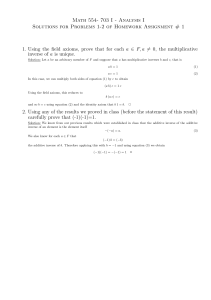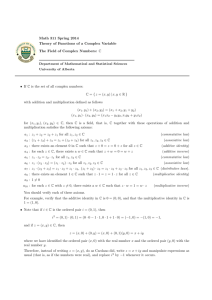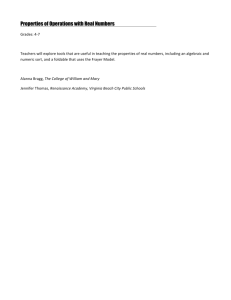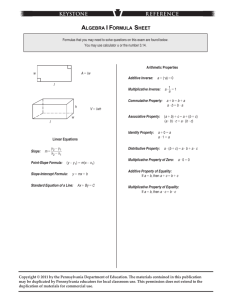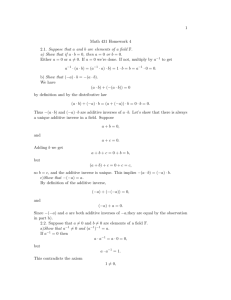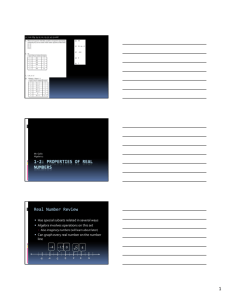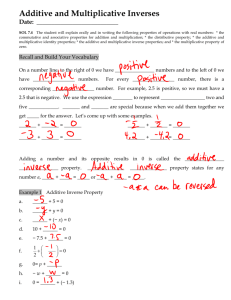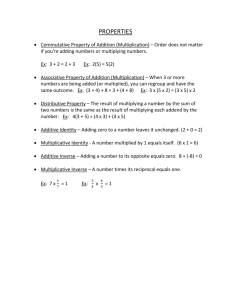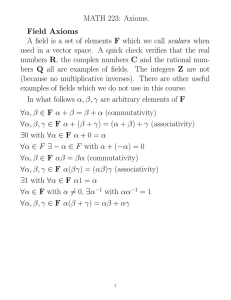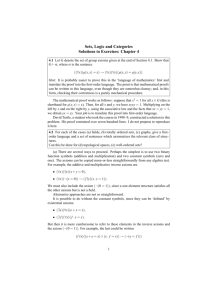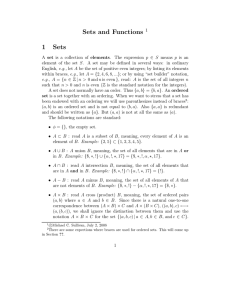Numbers and Arithmetic - University of Memphis
advertisement
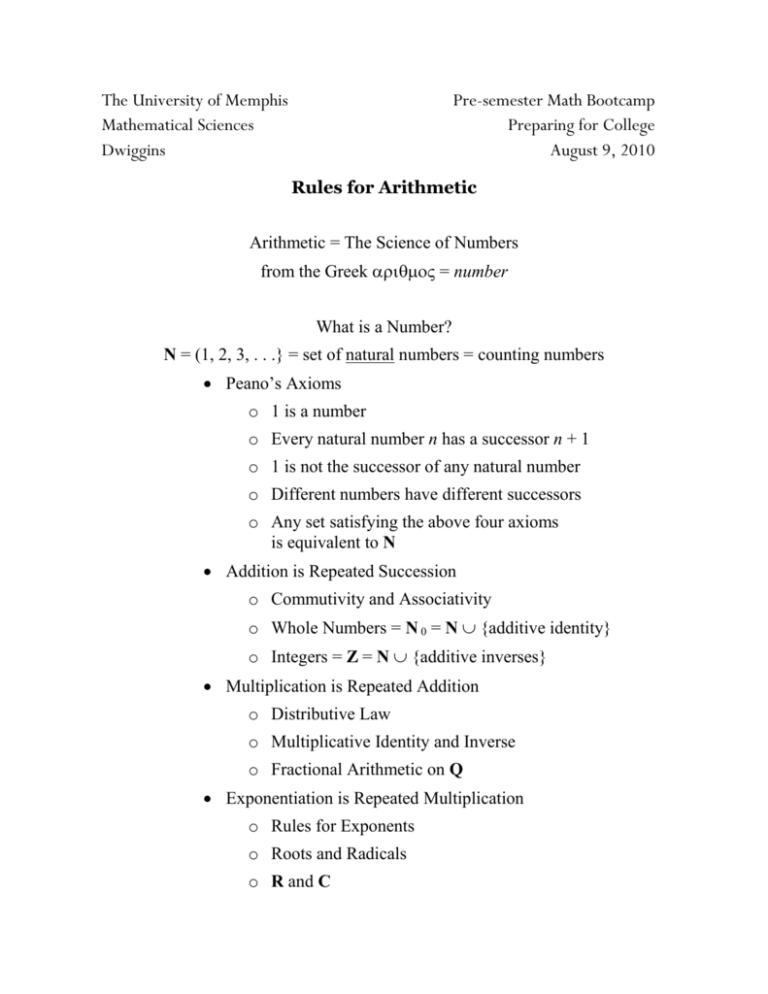
The University of Memphis
Mathematical Sciences
Dwiggins
Pre-semester Math Bootcamp
Preparing for College
August 9, 2010
Rules for Arithmetic
Arithmetic = The Science of Numbers
from the Greek = number
What is a Number?
N = (1, 2, 3, . . .} = set of natural numbers = counting numbers
Peano’s Axioms
o 1 is a number
o Every natural number n has a successor n + 1
o 1 is not the successor of any natural number
o Different numbers have different successors
o Any set satisfying the above four axioms
is equivalent to N
Addition is Repeated Succession
o Commutivity and Associativity
o Whole Numbers = N 0 = N {additive identity}
o Integers = Z = N {additive inverses}
Multiplication is Repeated Addition
o Distributive Law
o Multiplicative Identity and Inverse
o Fractional Arithmetic on Q
Exponentiation is Repeated Multiplication
o Rules for Exponents
o Roots and Radicals
o R and C
The Twelve Algebraic Field Axioms
(Rules for Arithmetic)
Closure: The sum of any two numbers is a number,
and the product of any two numbers is a number.
Associativity: Sums and products of more than two numbers
are well-defined by taking the sums or products two at a time.
That is, the sum a + b + c can be computed using either
(a + b) + c or a + (b + c), since re-grouping using the
parentheses does not change the value of the sum.
The corresponding rule holds for the product of three numbers.
Commutivity: a + b = b + a and ab = ba, i.e. the order
of the numbers doesn’t matter in either operation.
Identity: 0 is the additive identity, 1 is the multiplicative identity.
Inverse: Additive inverses exist, defining the set of integers,
and multiplicative inverses exist, defining the set of rational numbers.
Note that since each of the above five rules is true for both addition
and multiplication, the statements above actually list the first
ten of the twelve field axioms. Here are the final two:
Distribution: Products distribute over sums. That is,
a(b + c) = ab + ac.
Note however that sums do not distribute over products.
Non-triviality: The identities for addition and multiplication are different.
(If they were the same, say 0 = 1, then every number would be the same,
and the set of numbers would contain only one element, called the trivial set.)
Exercises:
# 1. Use the rules of arithmetic to calculate a 15% tip on a $28 check.
# 2. Use rules of arithmetic to calculate (a + b)2 and the value of 1222.
# 3. Use the field axioms to prove a*0 = 0 for every number a.
# 4. Use #3 to explain why 0 cannot have a multiplicative inverse.
